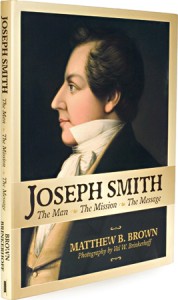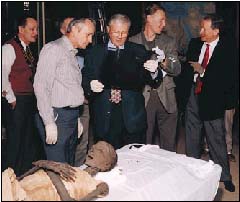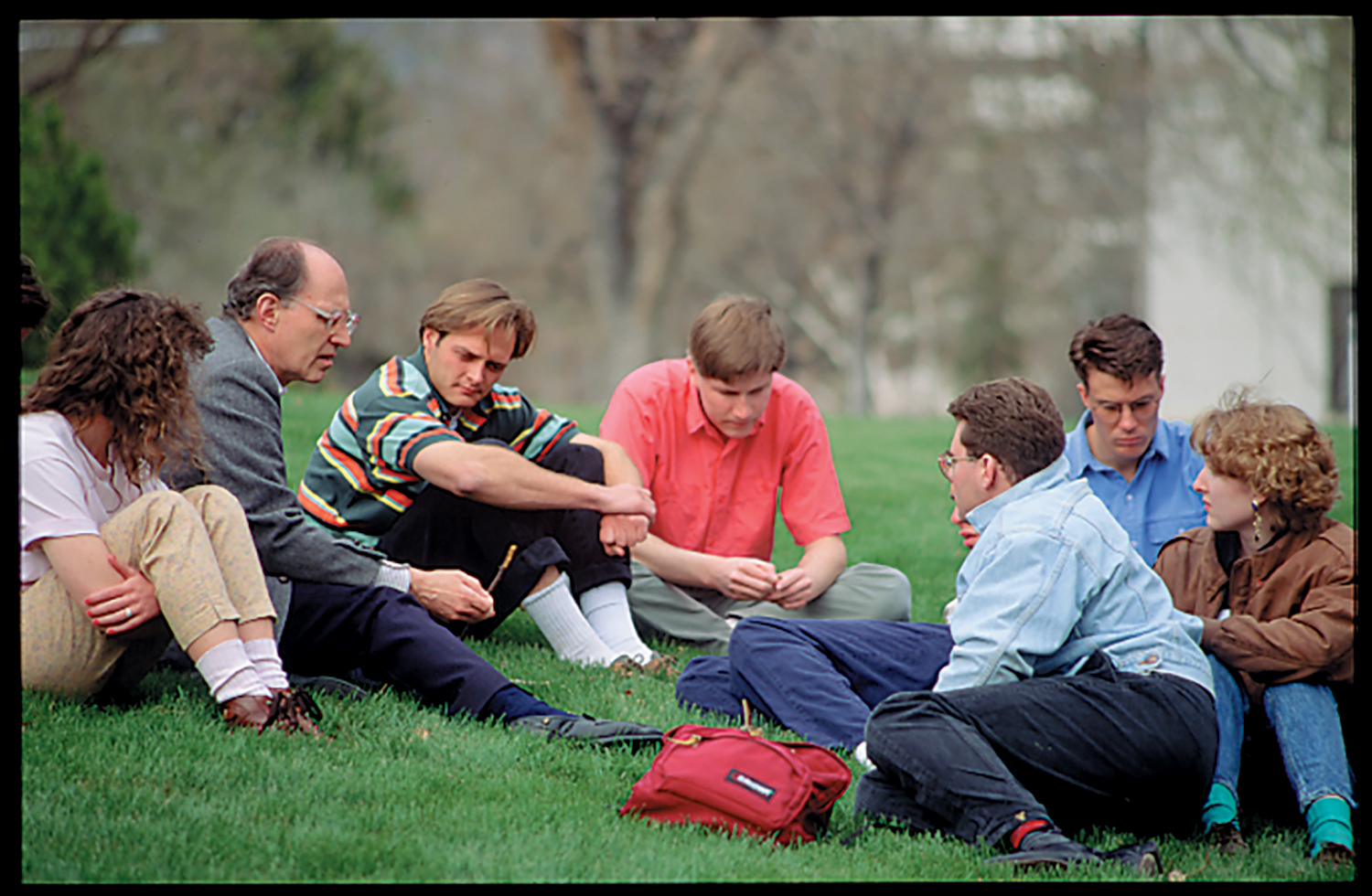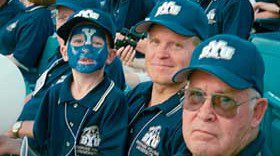With a variety of histories, novels, and picture books, alumni titles just keep coming.
As the Preacher admonished, “Of making many books there is no end” (Eccl. 12:12), and there is in fact neither end nor abatement of the rich, varied, and amazing outpour of books of all genres by BYU alumni and others associated with the university. Space allows me to report on just a few recent volumes.

An important book marking the bicentennial of the Prophet Joseph Smith’s birth is Matthew B. Brown’s (BA ’98) Joseph Smith: The Man, the Mission, the Message (Covenant; 106 pp.; $29.95), with photography by Val W. Brinkerhoff (BA’80). In nine brief, well-researched, and wonderfully illustrated chapters, Brown draws on contemporary sources to depict Joseph Smith. Brown describes the Prophet’s appearance and personality, character, enjoyments and trials, religious thought and deeds, public professions, and contributions as a man of God and restorer of the kingdom and provides evidences of Joseph’s divine calling and an account of his martyrdom at Carthage Jail. This attractive book is the best, most readable short biography of the Prophet Joseph Smith that I have read. Hail to the Prophet!
Elder Neal A. Maxwell, a member of the Quorum of the Twelve Apostles until his death on July 21, 2004, has left us a poignant and heartening last will and testament in Moving in His Majesty and Power (Deseret Book; 106 pp.; $14.95). Elder Maxwell, in his inimitable lyrical style and with his poetic ability to utter “what oft was thought, / But ne’er so well expressed” (Alexander Pope, “An Essay on Criticism”), presents three of his last sermons and numerous incisive comments on life—mortal and immortal. Typically, he sees a lesson in a shoehorn: “Obedience can be like a helpful shoehorn, easing us wincingly into new and spiritual symmetry, as our swollen pride gives way” (p. 80). Also destined for frequent citation are Elder Maxwell’s memorable and faithful farewells in “On Dying” and “My Testimony.” He concludes “On Dying” poetically:
For those paradise-bound,
What seemed to be the grim ballet of separation,
With but one pirouette,
Turns out to be a resplendent reunion. [p. 91]
Stephen E. Robinson (BA ’71), in the hardcover picture book You Are Priceless: The Parable of the Bicycle (Shadow Mountain; 30 pp.; $18.95), illustrated by Benjamin R. Sowards (BFA ’01), renders his now-classic parable from Believing Christ, which is, like all good parables, applicable to all ages. The parable of a little girl who does not have enough money to buy a bicycle but who is helped by her loving father’s intervention is a beautiful, instructive, and memorable approach to the Atonement of Jesus Christ.

Authors The Van Nguyen (pronounced Tay Van Win) and David Lynn Hughes (BS ’71), and Major Virgil N. Kovalenko (BA ’62), research consultant, in When Faith Endures: One Man’s Courage in the Midst of War (Covenant; 264 pp.; $18.95), open up the little-known history of the Church in Vietnam and among the Vietnamese people during and since the Vietnam War. The Van Nguyen, who served as president of the 250-member Saigon Branch, tells a powerful and fascinating story of the Vietnamese Saints—some of whom were evacuated from Saigon in 1975, others of whom underwent the terrible nightmare of torture, death, and reeducation camps—and follows their lives up to the present day.
Elder Emmanuel Abu Kissi, in Walking in the Sand: A History of The Church of Jesus Christ of Latter-day Saints in Ghana, edited by Mathew K. Heiss (BA’83) (BYU Press; 384 pp.; $27.95), tells another moving story of God’s hand in establishing the Church of Jesus Christ, this time in Ghana. Rising from the several unofficial Latter-day Saint congregations that had organized prior to the 1978 revelation that extended priesthood to all worthy males, the Church in Ghana grew rapidly. It began extensive building and welfare projects before encountering persecution and ignorance, culminating in the terrible 18-month “Freeze,” during which the government forbade all meetings of the Church of Jesus Christ and closed the Church mission home from July 1989 to November 1990. The Saints then enjoyed “the Restoration”—the regathering, reordering, and rebuilding of the Church, the organization of two stakes (1991), and the dedication of the Accra Ghana Temple in January 2004. Today the Church is again “walking in the sand,” a Ghanaian expression meaning “alive and well.” This engaging history is told by Elder Kissi, a Ghanaian pioneer who now serves as an Area Authority Seventy.
Marilyn Arnold (BS ’57), professor emeritus of English and—since her retirement—author of six novels, has struck again, to our delight. Minding Mama (Mayhaven Publishing; 279 pp.; $24.95) is the wacky, hilarious tale of Dorie June Grimes’ cross-country journey with her (very dead) mother Ruetta Flatray, a Mormon convert, who “was going home at last” and riding shotgun to boot. The story, fraught with both instruction and delight, is a revisiting of the road novel, in which the late Ruetta and the lively Dorie travel in a Toyota pickup truck from Atlanta to little Jericho, Utah, (reminiscent of Kanab) and encounter all the complications of traveling with a dead body in the front seat while picking up a motley crew of fellow travelers en route. Ruetta may be deceased and badly needing to be planted in Mormon soil, but her Mormon influence yet hovers over Dorie and her strange entourage. Minding Mama, a very funny yet deceivingly thoughtful novel, is a deserving winner of Mayhaven’s Award for Fiction.
Leonard D. Tourney (BA ’63) writes his ninth Elizabethan mystery novel in Time’s Fool: A Mystery of Shakespeare (Tom Doherty Associates; 320 pp.; $24.95). The hero, victim, and do-it-yourself sleuth of this adventure mystery is none other than Will Shakespeare himself. Mysteriously summoned to a tryst with a former mistress—the “dark lady” of his sonnets—the Bard of Avon finds himself enmeshed in a plot to extort him, accuse him of “murder most foul” (Hamlet 1.5.31), and murder him and his wife and daughters. In escaping would-be assassins, Will, full of “the native hue of resolution” (Hamlet 3.1.91), leads us on a fox-and-geese chase down the Thames, through the English countryside and the Forest of Arden to Stratford-upon-Avon, and into both the lordly mansions and the dark underbelly of London. Tourney, a member of the writing program faculty at the University of California, Santa Barbara, knows Shakespeare and Elizabethan England—and the art of the whodunit; he weaves these together in a highly imaginative look at another side of the English language’s greatest dramatist and poet.
Kenneth O. Kemp (BA ’80), in City on a Hill: Parables of the Carpenter(HarperSanFrancisco; 276 pp.; $19.95), builds on the imagined life of Jesus of Nazareth—Jeshua ben Joseph—in his formative years before he begins his ministry, a story begun in Kemp’s popular The Welcoming Door. Here Kemp novelizes two New Testament parables as supposedly experienced by Jeshua—the unjust judge, with its lessons of faithful persistence; and the unmerciful servant, with its lessons of forgiveness. In Kemp’s novel Jeshua the carpenter lives the life he will later render as parables in his teaching.
Here are a couple of anomalous books by an energetic and word-loving alumnus, Ferrel Glade Roundy (BA ’61), books about which you’ll likely read nowhere else but enjoy nonetheless. Recently retired after 34 years of teaching English and German at Taft College, Roundy has published a volume composed mainly of Shakespearean sonnets but also of a variety of other forms, including whimsical narrative poems and devotional hymns, in Gramma’s Pickle Barrel by the Lilac Tree (1st Books Library; 376 pp.; $16.95). Now the energetic Roundy has published a long novel, Huck Finn Goes West: Memoirs of the Legendary American Folk Hero (Bookman; 657 pp.; $21.95), in which he undertakes to finish Mark Twain’s unfinished and fragmented out-West sequel to The Adventures of Huckleberry Finn. Roundy tracks Huck up the Mississippi, where Huck runs onto the beleaguered Mormons—just in time to see the martyrdom of Joseph and Hyrum Smith at Carthage. After a two-year hiatus in Nauvoo, where Huck becomes a “dry-land” Mormon, falls in love, and loses his girl to the mob, he heads into Indian Territory, where he becomes close friends with an amazingly articulate Pawnee Chief Joseph, who, it turns out in the novel, is a Latter-day Saint. Huck eventually shows up in Salt Lake City just in time to witness the Utah War. There he finds a wife before settling down in Idaho. He later visits ol’ Jim and Tom Sawyer and his Becky, meets Mr. Mark Twain himself, and happens to be on hand for every major event in the West in the second half of the 19th century. Huck Finn Goes West is a wildly imaginative, fast-paced narrative defense of Mormonism and the American Indian.
Richard H. Cracroft, Nan Osmond Grass Professor in English, emeritus, taught American literature and creative writing at BYU for 40 years.









